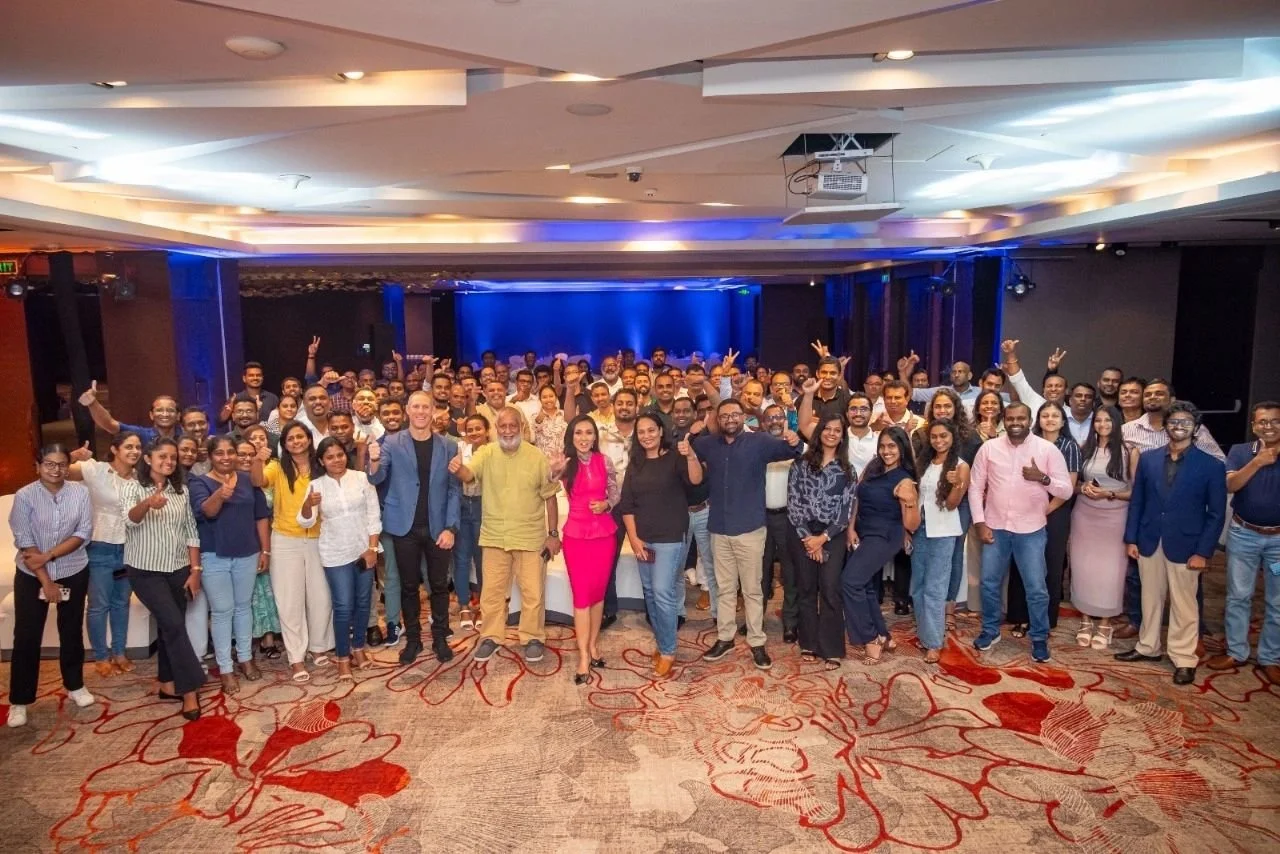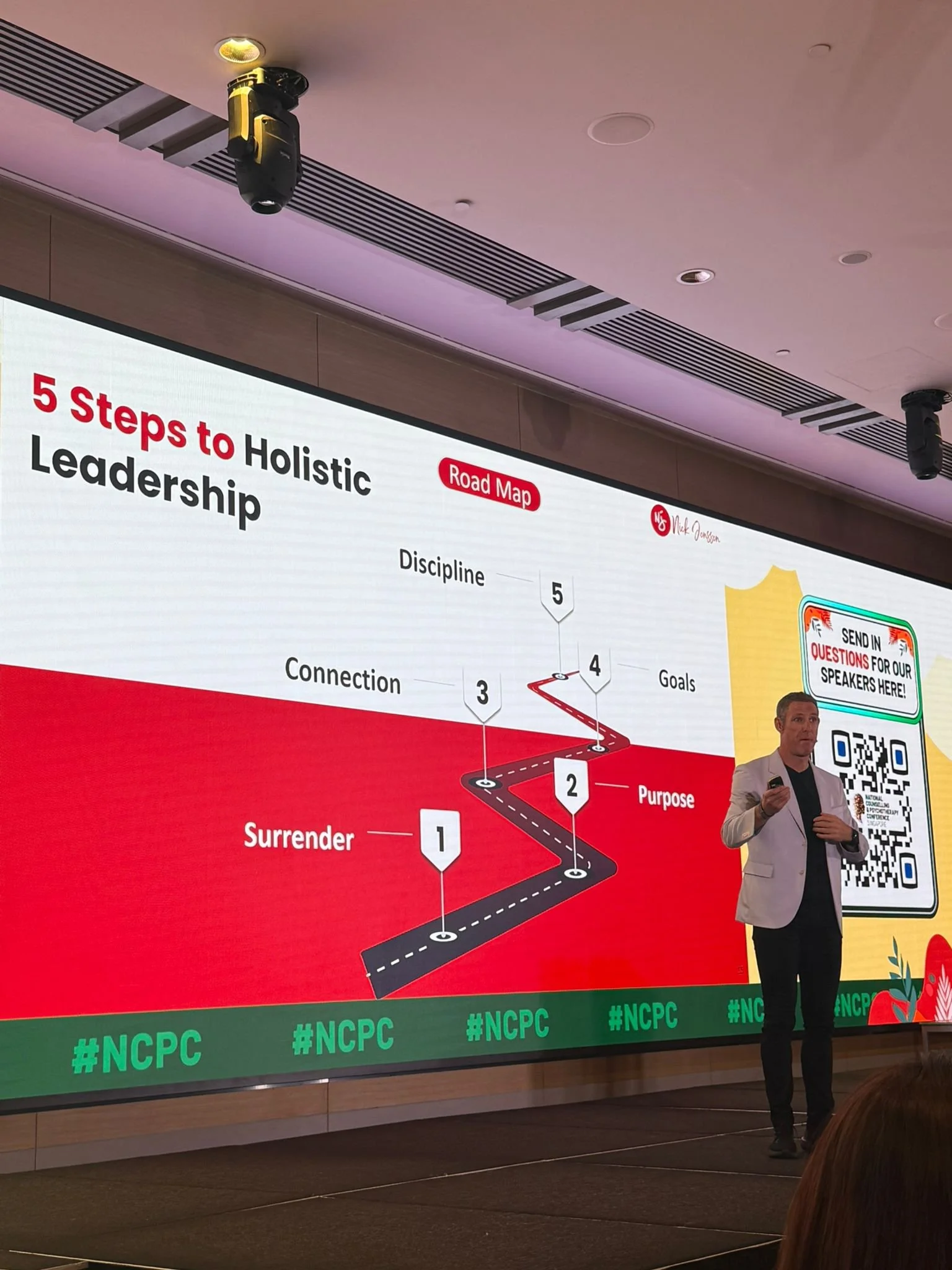Wellbeing: The Missing Keynote Conversation
Nick Jonsson: Why Every Executive Event Needs a Conversation About Wellbeing
At nearly every executive conference, strategy retreat, or leadership summit, the agenda revolves around performance — scaling the business, driving innovation, navigating change, developing leaders, and maintaining competitive advantage.
These are crucial conversations.
Yet one topic continues to be sidelined, rushed, or treated as an optional wellness break instead of what it truly is — a strategic imperative:
Wellbeing.
Not surface-level wellbeing — not the five-minute breathing exercise or the stress management slide tucked between performance sessions.
But the real conversation every authentic leadership talk should include:
The emotional weight
The silent pressure
The identity fatigue
The loneliness behind leadership
Because the cost of not having this conversation it’s enormous.
The Pressure No One Sees
Executives are expected to be confident, composed, visionary, strategic, emotionally intelligent, and resilient — all at once.
But behind that expectation, many leaders are silently struggling.
As a motivational speaker and leadership keynote presenter, I’ve seen this pattern everywhere. I’ve lived it too.
During the height of my corporate success, I was admired publicly while privately falling apart. My book, Executive Loneliness, revealed a truth leaders instantly recognized:
High-performing executives often suffer in silence.
I call it the leadership mask — the polished identity leaders feel obligated to maintain while their inner world fractures.
The longer the mask stays on, the heavier it becomes.
Isolation is not a personality trait.
It’s a leadership culture outcome.
And isolation is where burnout begins.
The Missing Conversation in Executive Leadership
When executive wellbeing is not addressed:
Leaders disconnect from themselves
They disconnect from their values
They disconnect from their teams
And eventually, performance collapses — not because of capability, but because of human overload.
Leadership becomes reactive.
Teams feel the tension.
Culture becomes transactional.
That’s why every leadership keynote or executive retreat must integrate wellbeing as a core performance driver, not a side topic.
Holistic Leadership: Reframing Leadership Strength
I define Holistic Leadership as:
A way of leading where wellbeing is integrated into how you think, work, decide, and show up — physically, mentally, emotionally, socially, and spiritually.
It’s not about being perfect.
It’s about being whole enough to lead with clarity and humanity.
This is where my 5 Steps to Holistic Leadership become foundational.
Nick Jonsson’s 5 Steps to Holistic Leadership
1. Surrender
Surrender is not weakness — it’s courage.
It’s the decision to say, “I can’t do this alone.”
It’s choosing honesty over image — the moment leaders remove the mask and reconnect with themselves.
2. Purpose
Purpose is the inner fuel.
When leaders lose connection to why they lead, the role becomes heavy.
Reconnecting to purpose reignites energy, focus, and authentic motivation.
3. Connection
Connection is the antidote to executive isolation.
Not networking — belonging.
Trusted peers. Safe spaces. Honest conversations. Connection rebuilds resilience.
4. Goals
Many leaders have goals; few have aligned goals.
Aligned goals are rooted in values, identity, and fulfillment — supporting both success and wellbeing.
5. Discipline
Sustainable leadership isn’t built in crises.
It’s maintained in daily habits that preserve clarity, balance, and emotional strength.
Discipline is the practice of staying well enough to lead well.
When these principles are built into keynote speaking sessions or leadership development programs, the results are visible and lasting.
Proof: When Leaders Experience This Work
At the Janashakthi Group Holistic Leadership Summit 2025, I co-facilitated a deeply reflective and connected experience for senior executives.
This was not a motivational hype session.
It was an authentic leadership talk — a transformation space.
Leaders spoke with honesty — some for the first time in years.
They connected not just as professionals, but as humans.
One senior leader, Andrew, shared:
"This was the first leadership room where I felt I didn’t have to pretend I had everything together. Realizing I wasn’t alone changed the way I see leadership — and myself.”
Another participant said:
“We came in as executives. We left as humans who understand one another. This is what trust looks like.”
That is what happens when executive wellbeing enters the agenda:
Emotional guard drops
Trust deepens
Teams align
Leadership becomes authentic
Culture strengthens from the inside
The Strategic Case for Wellbeing in Leadership Events
Organizations are no longer asking how to push leaders harder —
they’re asking how to help leaders lead sustainably.
Because:
Healthy leaders think clearer.
Connected leaders communicate better.
Purpose-driven leaders inspire deeper commitment.
This isn’t about avoiding burnout anymore.
It’s about enabling enduring excellence.
The Future of Leadership Development
The world doesn’t need stronger leaders — it needs healthier, more human leaders.
Leaders who show up with clarity, humility, and courage.
Leaders who model the wellbeing they expect from their teams.
Leaders who don’t just lead companies — they lead lives worth following.
When inspiring leaders engage in real conversations about wellbeing, executive events no longer just inform — they transform.
They create leaders who lead as whole, authentic human beings.
And that is the kind of leadership the world needs most.
Every keynote I deliver, every leadership conversation I host, begins and ends with one simple truth — leaders are human first. When we stop treating wellbeing as an afterthought and start making it the foundation of leadership, everything changes: performance, culture, and impact.
The most inspiring leaders are not those who hide behind perfection, but those who lead with honesty, empathy, and balance.
That’s why my mission as a motivational speaker and leadership keynote facilitator is to create spaces where leaders can reconnect — with themselves, their teams, and their purpose — and rediscover what it truly means to lead well and live well. Because when leaders thrive, organizations flourish.
Or follow Nick on LinkedIn for weekly insights on coaching, leadership, wellbeing, and performance.



